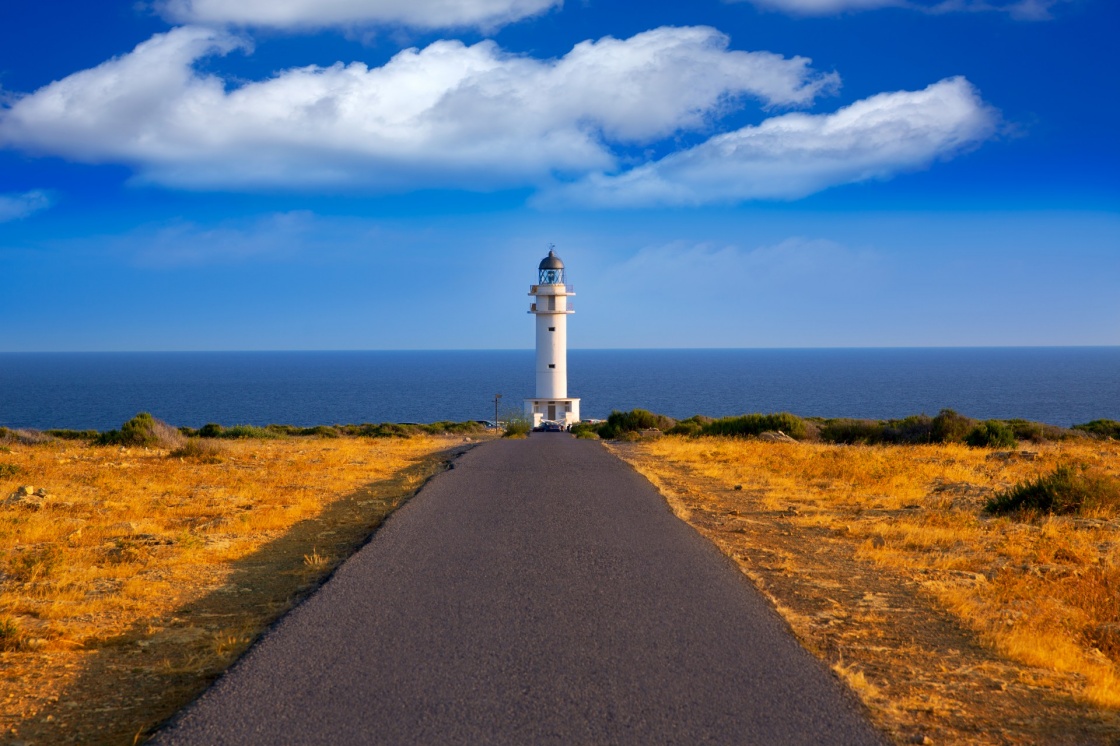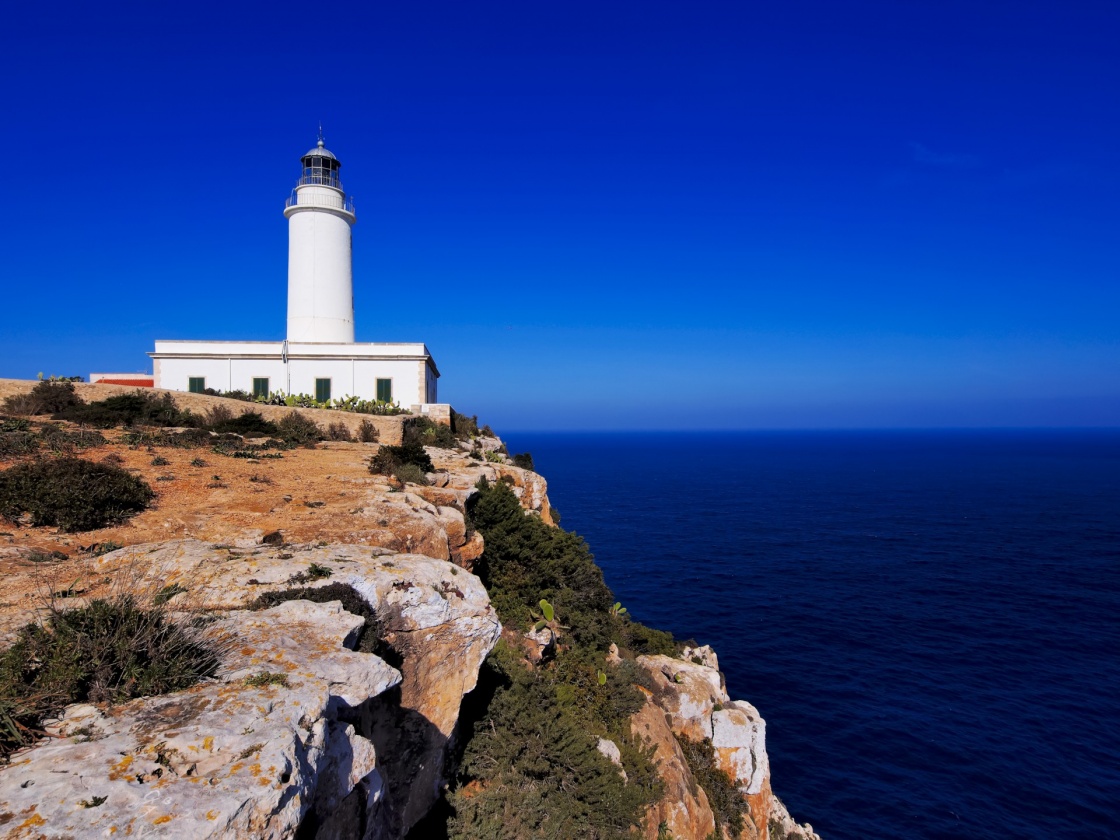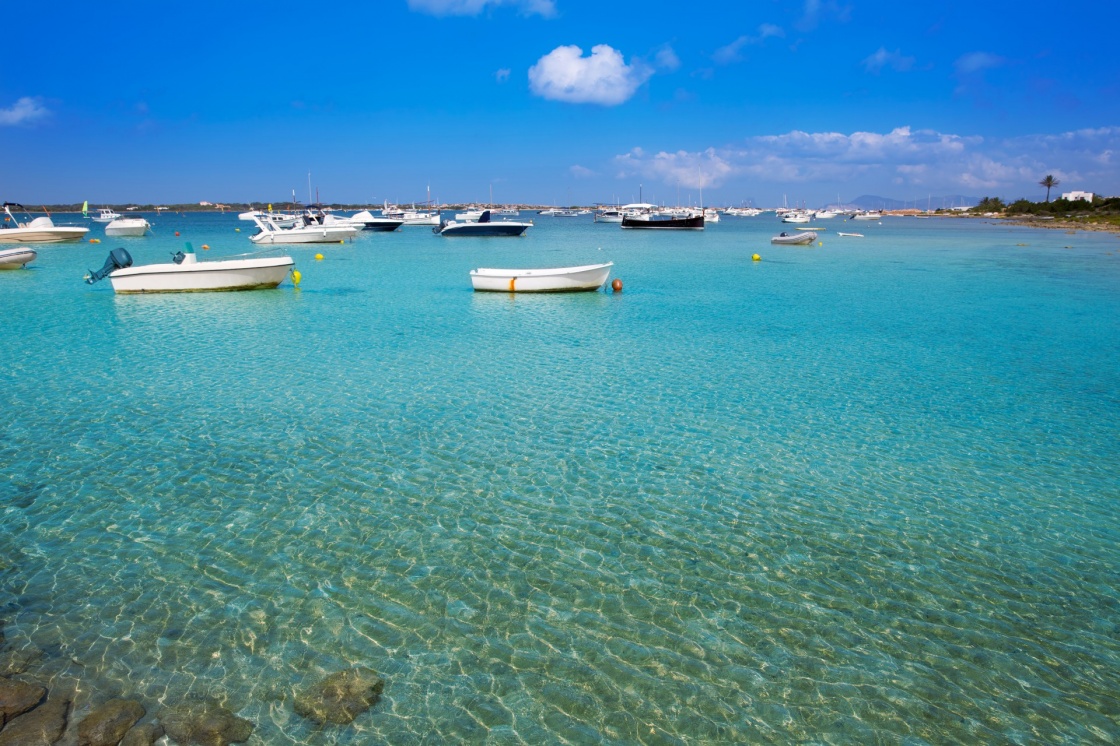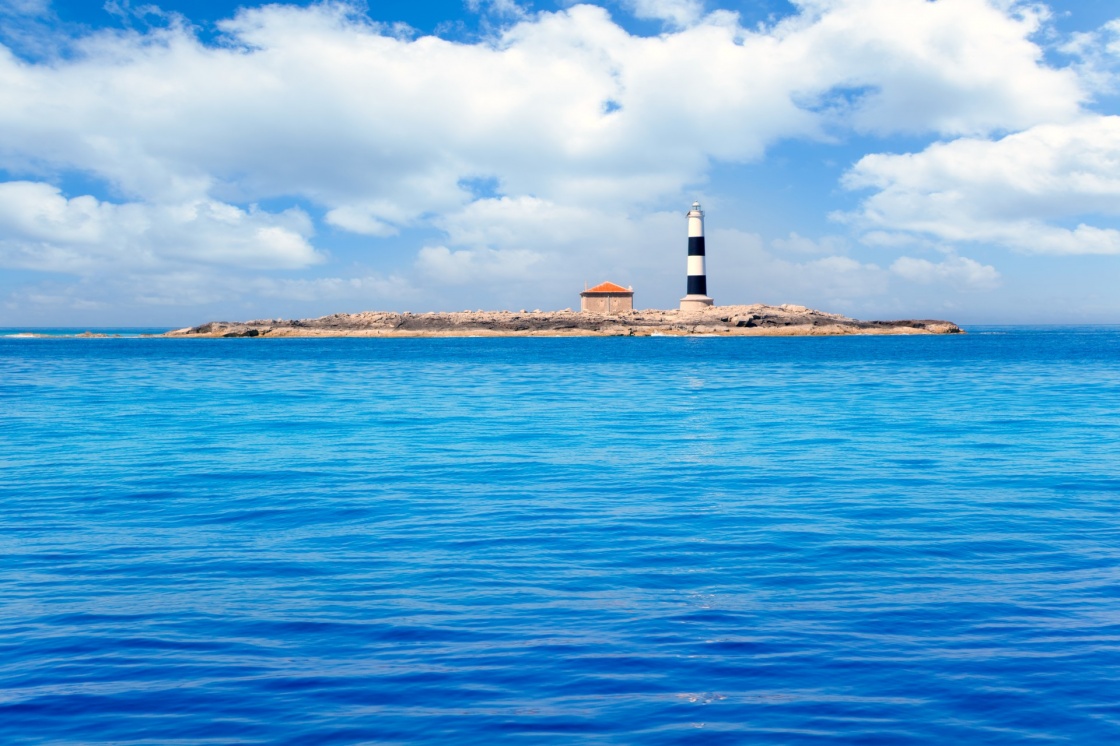1. Cap de Barbaria
Like a moon landscape, the Cap of Barbaria is one of the most photographed places of Formentera. It impresses because of the beauty of its dry desolated landscape. At the end of the road a lonely lighthouse is waiting for you. South of it you can find a famous cave: Sa Cova Foradada, which is sitting 100 meters above the sea. Accessing the cave is not for the claustrophobic as you have to lower yourself through a very narrow roof.

 'Barbaria cape Lighthouse in Formentera Mediterranean Balearic islands of Spain' - holbox / Shutterstock
'Barbaria cape Lighthouse in Formentera Mediterranean Balearic islands of Spain' - holbox / Shutterstock2. Far de la Mola
Known as the 'lighthouse at the end of the world', this lighthouse is placed on the highest part of the island (200 meters over the sea). The most spectacular sight to see here are the cliffs that reach 120 meters of height beyond the lighthouse. You can also check the monument which pays tribute to Jules Verne for having chosen Formentera for the setting of his novel 'Hector Servadac: Travels and Adventures through the Solar System'. Not to be missed: the most superb views of the island while arriving/leaving La Mola along the main road (at the Mirador point).

 'Lighthouse far de la Mola, Formentera, Balearic Islands, Spain' - Karol Kozlowski / Shutterstock
'Lighthouse far de la Mola, Formentera, Balearic Islands, Spain' - Karol Kozlowski / Shutterstock3. Estany Pudent
Estany Pudent is the largest of Formentera’s two salt lagoons. It starts south of the Port de la Savina, and since there is no renewal -though there is an inlet, Sa Síquia, which joins it to the sea- the combination of sulphur and decomposing algae gives a putrefy smell, hence the name 'pudent', meaning pungent of malodorous. In summer it's also full of mosquitoes. But it's worth a visit, as the colours the sun prints in the water provide a superb spectacle. The lake is right next to Ses Salines – the salt beds. These are the site of the traditional salt manufacture which used to support the island. Remember that it's forbidden to swim here.
4. Estany des Peix
Located south of La Savina, just on the right side of the main road while leaving La Savina in the direction of all the other places of the island. The smallest lagoon used to be a fisher port, and it's joined to the open sea by a narrow mouth, named La boca. Nowadays it's also a port for small boats. Its calm and peaceful waters make it ideal for practicing water sports. Walking or cicling around is also a good idea. And why not just sitting around to enjoy a magical sunset with wonderful views of Es Vedra silhouette.

 'Formentera boats at Estany des Peix lake in Balearic Islands' - holbox / Shutterstock
'Formentera boats at Estany des Peix lake in Balearic Islands' - holbox / Shutterstock5. Ses Salines Natural Park
The Ses Salines Formentera Natural Park covers a wide area, including the Es Trucadors and its surrounding sea up to the Estany Pudent, where the high concentrations of salt made possible the salt industry, which has been the main economy industry of the island. Nowadays the salt industry no longer works, but you can still see the small salt pools.
6. Defence towers
You will find several watch towers that recall the days when there was constant fear and need for vigilance, as a result of the multiple incursions of the pirates. There are 4 defence towers: one near the Barbaria lighthouse, another at Punta Prima and at Punta de sa Gavina, at Pis des Català (Migjorn side) and at Espalmador island.
7. Camí de Sa Pujada or Camí Romà (Roman Pathway)
Probably the most beautiful walk in Formentera. Built in the XVIII century, it used to be the old road that joined La Mola with the rest of the island, and it's popularly known as roman path because of its paving, that reminds the old roman avenues. This path starts at Es Caló de Sant Agustí and finishes near El Pilar de la Mola. It's about 1,5 km long and runs along the seaside, so you get superb views of the island. Ideal to be done in the summer afternoons, after a beach day, to enjoy the silence and peaceful atmosphere of the island.
8. Past Remains: Ca na Costa
The stone circle of Ca na Costa dates back to the Bronze Age, and it is the most significant megalithic burial ground in the Balearics. It was discovered in 1974. To get there exit Es Pujols toward Illetes and you will see a turning on your left clearly signposted. The limestone slabs, surrounded by smaller stones, are the earliest signs of people settling on the island. The stones are next to a grave where were buried eight men and two women. One of the men was over two meters in height so it is thought that he suffered from gigantism. Some speculate that he was revered for his size and that's the reason for this special burial.
9. Wheat Mills (El Molí Vell de la Mola)
Since the 60's, Formentera mainly lived from fishing and agriculture. That's why the wheat mills of the island continue to form part of this landscape even though they are not in use anymore. At present, there are 6 wheat mills; the most famous is the one in la Mola, which has been fully restored and can be visited once a week. Rumor has it that in 1968 Bob Dylan rented it to spend a winter in Formentera.
10. La Mola Hippy Market
Wednesdays and Sundays afternoons, from 4:00 till 10:00 pm, in a square near the main road at El Pilar de la Mola, you will find the most authentic handicraft hippy market. All objects on sale have been made or worked on the island. Musicians liven up the area with their performances. A great spot to shop for souvenirs to bring back home.





